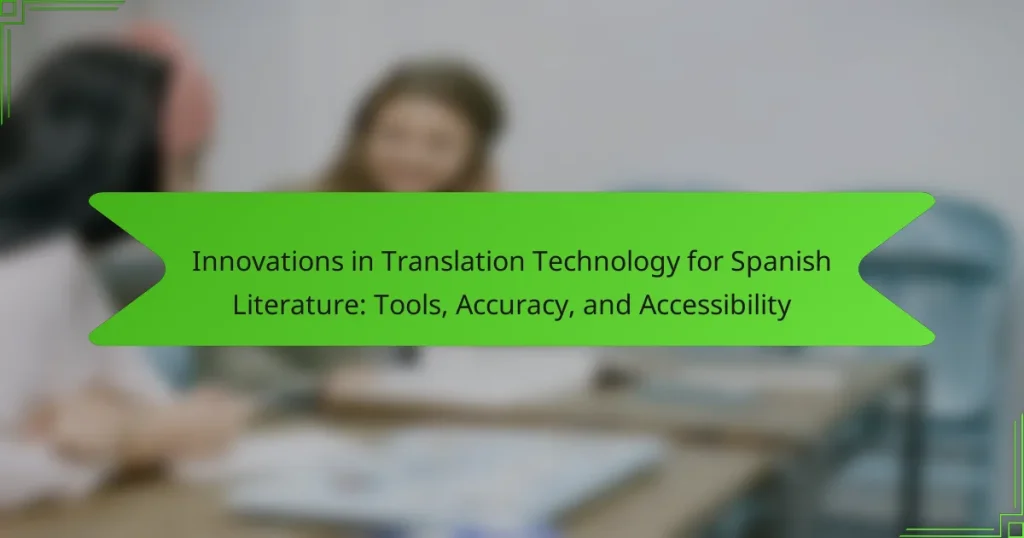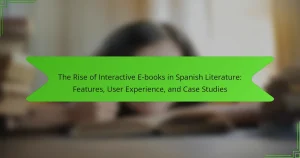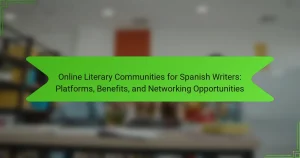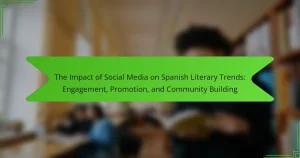Advancements in translation technology are transforming access to Spanish literature, enhancing accuracy and contextual understanding. Key innovations include machine learning algorithms and user-friendly applications that facilitate engagement. User feedback plays a vital role in refining these tools, addressing challenges like cultural nuances and idiomatic expressions. Collaborative platforms further promote accessibility, enabling diverse audiences to appreciate Spanish literary works.
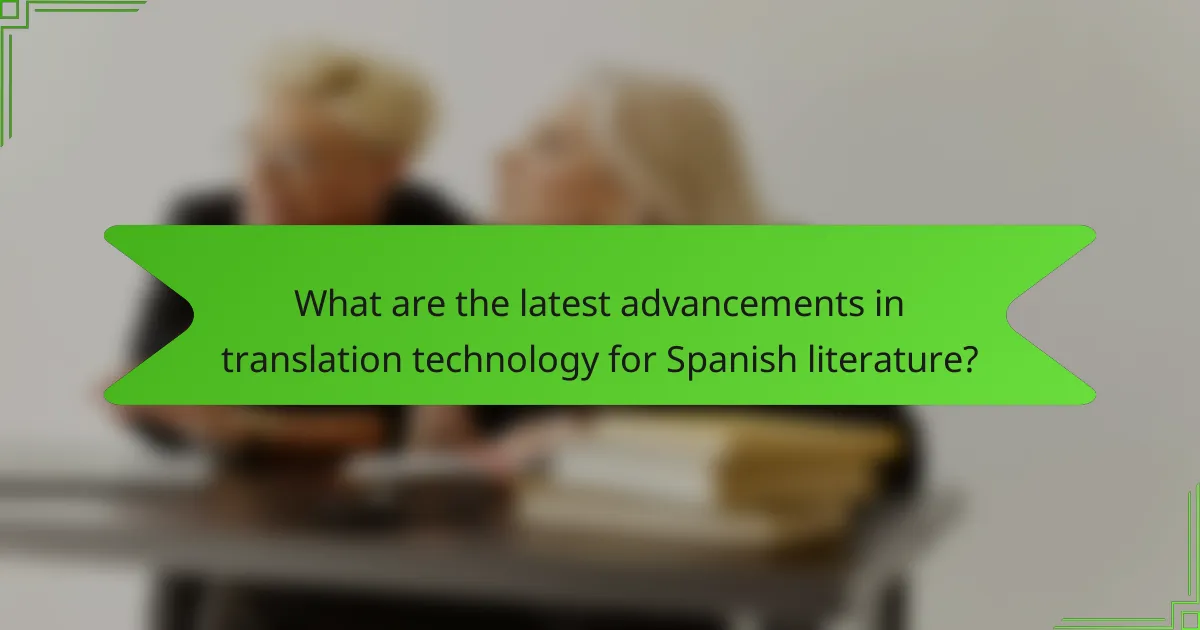
What are the latest advancements in translation technology for Spanish literature?
Recent advancements in translation technology for Spanish literature include enhanced machine learning algorithms, which improve accuracy and contextual understanding. Tools like neural machine translation utilize deep learning to capture nuances in language, resulting in more natural translations. Accessibility has also increased with user-friendly applications and platforms that cater to diverse audiences, allowing writers and readers to engage with Spanish literature globally. These innovations not only enhance translation quality but also support cultural exchange and literary appreciation.
How do machine learning algorithms enhance translation accuracy?
Machine learning algorithms significantly enhance translation accuracy by improving contextual understanding and reducing errors. These algorithms analyze vast amounts of text, learning patterns and nuances specific to Spanish literature. They adapt translations based on context, ensuring that idiomatic expressions and cultural references are accurately conveyed. As a result, machine learning tools increase accessibility to Spanish literature for diverse audiences, fostering a deeper appreciation of the language.
Which tools are leading the market in Spanish literary translation?
Leading tools in Spanish literary translation include Google Translate, DeepL, and SDL Trados. These tools enhance accuracy and accessibility through advanced algorithms and user-friendly interfaces. Google Translate offers extensive language support and real-time collaboration. DeepL is known for its nuanced translations and context-aware capabilities. SDL Trados provides professional-grade features for translators, including memory management and terminology databases. Each tool contributes uniquely to the evolving landscape of translation technology.
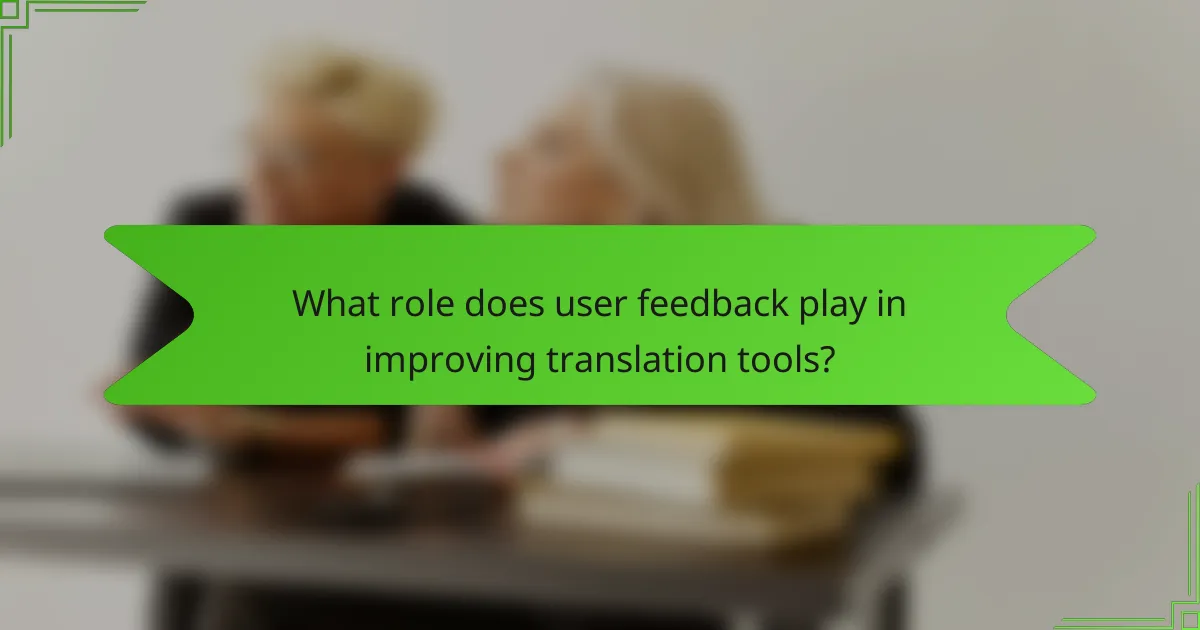
What role does user feedback play in improving translation tools?
User feedback is crucial for enhancing translation tools. It provides insights into accuracy and usability, enabling developers to identify areas for improvement. Continuous feedback loops ensure that tools evolve to meet user needs, particularly in translating Spanish literature, where cultural nuances are vital. Engaging with users helps refine algorithms, leading to better contextual understanding and more reliable translations. This iterative process ultimately increases the accessibility and effectiveness of translation technology in the literary domain.
How do cultural nuances affect translation accuracy?
Cultural nuances significantly impact translation accuracy by influencing meaning and context. These subtleties can lead to misinterpretations if not properly addressed. For example, idiomatic expressions in Spanish may not have direct equivalents in English, affecting the intended message. Innovations in translation technology, such as machine learning algorithms, help identify these nuances, improving overall accuracy. Additionally, tools that incorporate cultural context enhance accessibility, allowing readers to engage with Spanish literature more meaningfully.
Which platforms are best suited for collaborative translation projects?
Platforms best suited for collaborative translation projects include Crowdin, Transifex, and Smartling. These tools enhance accuracy and accessibility through cloud-based collaboration, real-time editing, and integrated quality assurance features.
Crowdin offers extensive integration options and supports various file formats. Transifex emphasizes community engagement and provides a user-friendly interface. Smartling focuses on automation and translation memory, ensuring consistency across projects. Each platform caters to different project needs, making them ideal for collaborative efforts in translating Spanish literature.
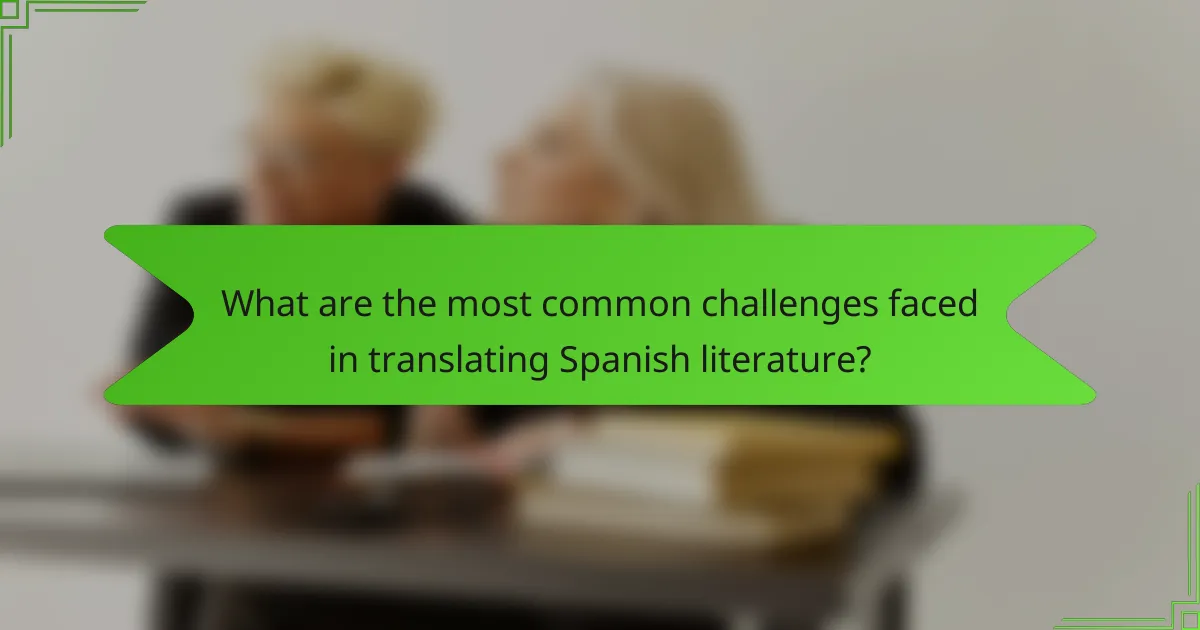
What are the most common challenges faced in translating Spanish literature?
Translating Spanish literature often faces challenges such as cultural nuances, idiomatic expressions, and stylistic differences. These factors can hinder accuracy and accessibility in translation. Innovations in translation technology, like AI-driven tools, aim to address these issues by enhancing precision and understanding of context. For instance, machine learning algorithms can analyze vast amounts of text to improve translation quality. Additionally, collaborative platforms facilitate accessibility for translators, allowing for shared resources and insights. This evolution in technology is crucial for overcoming common obstacles in translating Spanish literature.
How does idiomatic expression impact translation quality?
Idiomatic expressions significantly affect translation quality by introducing nuances that technology must accurately capture. Innovations in translation technology for Spanish literature enhance tools that interpret these expressions, improving accuracy and accessibility. For instance, machine learning algorithms analyze context to better understand idioms, resulting in translations that preserve the original meaning and cultural significance. As a result, the integration of advanced linguistic databases ensures that idiomatic expressions are translated with greater fidelity, ultimately enriching the reader’s experience.
What are the limitations of current translation technologies?
Current translation technologies face limitations in accuracy, cultural nuances, and context comprehension. These tools often struggle with idiomatic expressions and literary styles present in Spanish literature. Machine translation lacks the emotional depth and contextual understanding required for nuanced literary works. Additionally, accessibility remains an issue, as not all users have access to advanced tools, limiting their effectiveness.
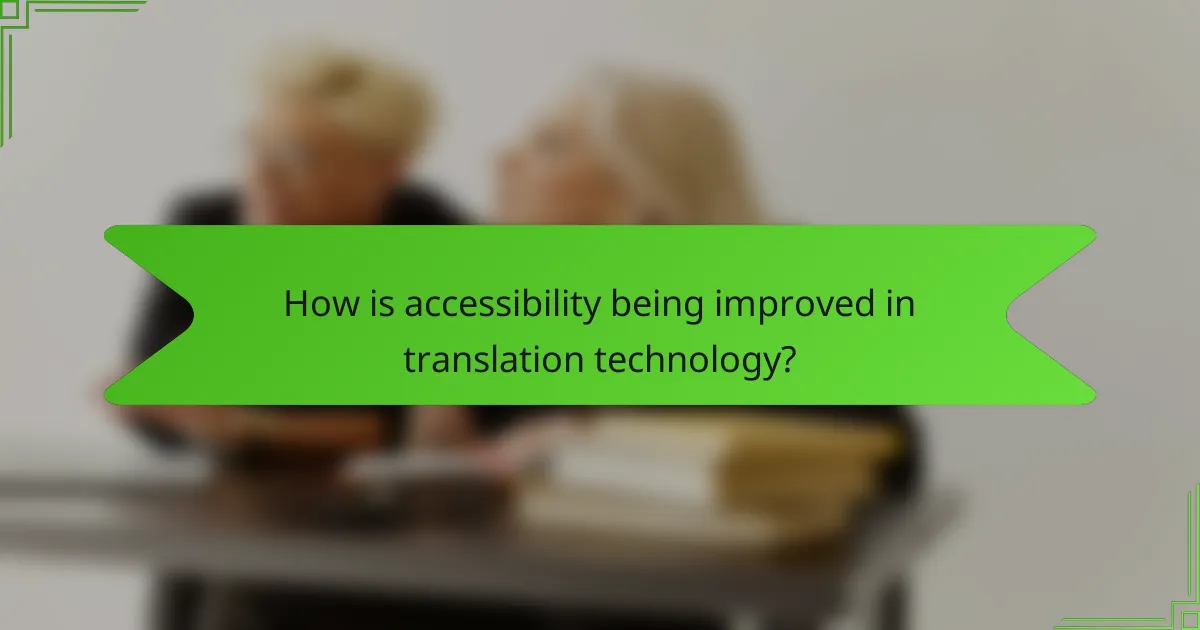
How is accessibility being improved in translation technology?
Accessibility in translation technology is being improved through advancements in artificial intelligence and machine learning. These innovations enhance the accuracy of translations, making Spanish literature more accessible to diverse audiences. Tools like neural machine translation and user-friendly interfaces reduce language barriers, enabling greater engagement with literary works. Additionally, features like text-to-speech and customizable font options cater to users with disabilities, further promoting inclusivity in accessing Spanish literature.
What features make translation tools more user-friendly for diverse audiences?
User-friendly translation tools incorporate intuitive interfaces, real-time feedback, and customizable settings. These features enhance accessibility for diverse audiences. For instance, visual aids and context-aware suggestions improve comprehension. Additionally, multilingual support broadens usability, while machine learning algorithms increase translation accuracy.
Which organizations are advocating for accessible translation solutions?
Organizations advocating for accessible translation solutions include Translators Without Borders, the Globalization and Localization Association, and the International Federation of Translators. These entities focus on improving translation technology and ensuring accurate, accessible resources for Spanish literature and other languages. They emphasize tools that enhance accuracy and broaden accessibility for diverse audiences.
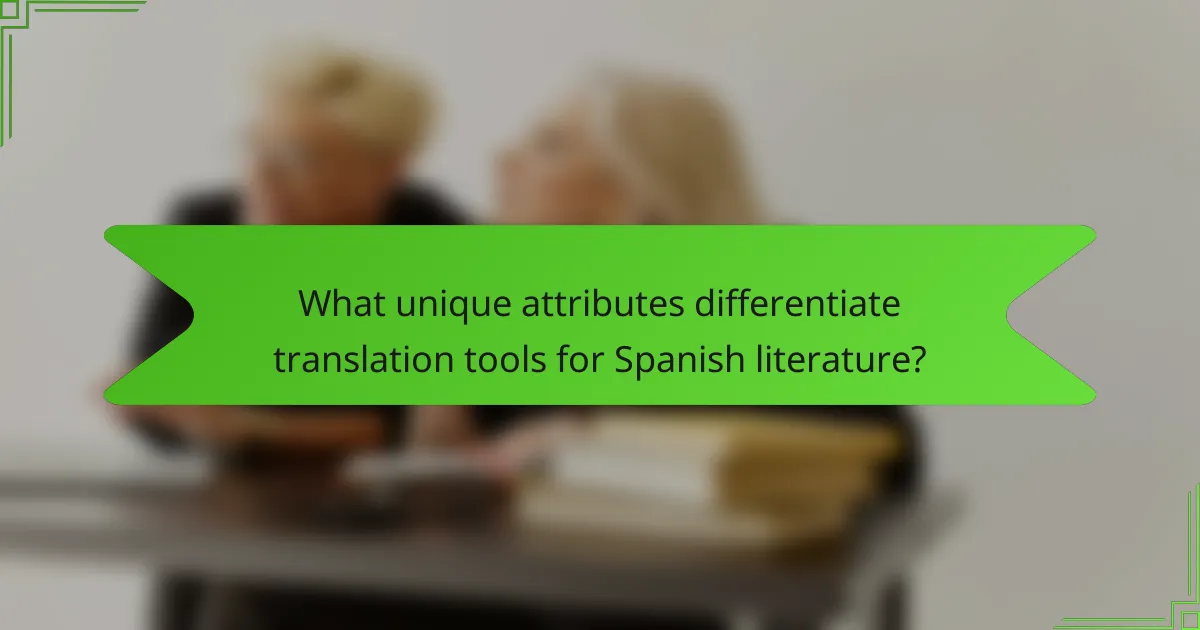
What unique attributes differentiate translation tools for Spanish literature?
Translation tools for Spanish literature differ through features like contextual understanding, cultural nuance, and specialized vocabulary. Unique attributes include adaptive learning algorithms that improve accuracy over time and the ability to preserve literary style. Some tools offer real-time collaboration for translators, enhancing accessibility and efficiency. Additionally, integration with digital libraries allows for instant reference to source materials, which is rare among competitors.
How do regional dialects influence translation choices?
Regional dialects significantly influence translation choices by affecting linguistic nuances and cultural context. Translators must consider local expressions and idioms to maintain accuracy and authenticity. This ensures that the translation resonates with the target audience. For instance, tools like neural machine translation can adapt to regional variations, enhancing accessibility and precision in translating Spanish literature.
What are the rare features found in specialized translation software?
Specialized translation software for Spanish literature often includes rare features that enhance its functionality. These may include context-aware translation algorithms, which adapt translations based on literary styles, and advanced semantic analysis tools that understand cultural nuances. Additionally, some software incorporates machine learning to improve accuracy over time and offers collaborative features for real-time editing among translators. These innovations significantly enhance the accessibility and quality of translations in the literary domain.
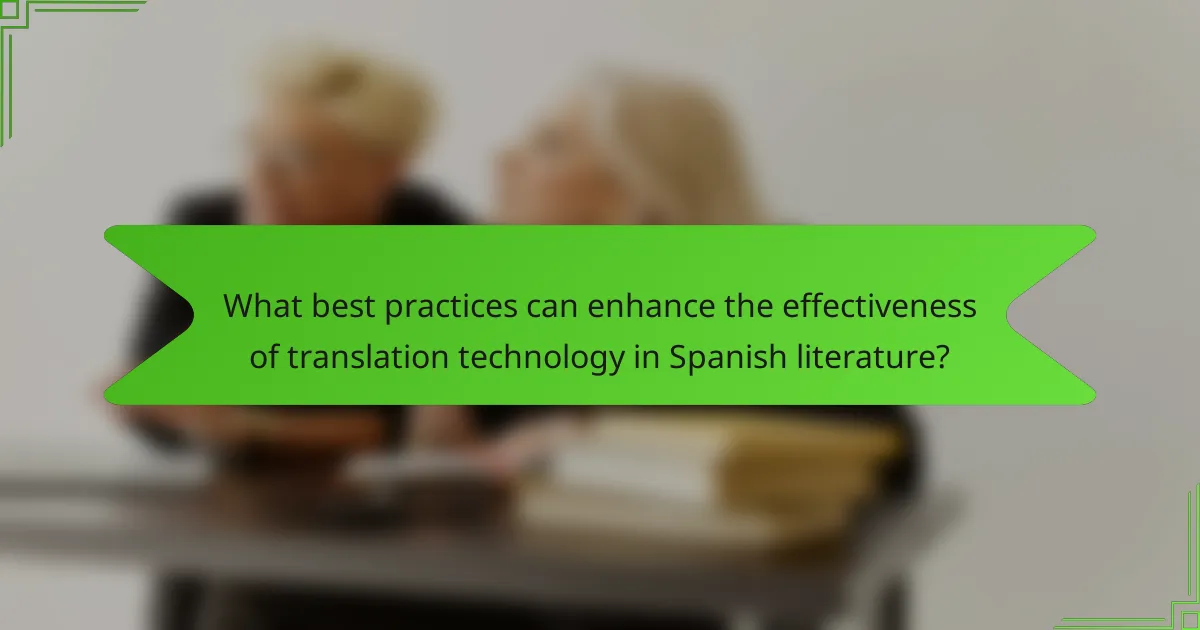
What best practices can enhance the effectiveness of translation technology in Spanish literature?
Utilizing best practices can significantly enhance the effectiveness of translation technology in Spanish literature. Key strategies include adopting advanced machine learning algorithms to improve accuracy, integrating user feedback for continuous refinement, and ensuring accessibility through multilingual interfaces.
Incorporating cultural context into translations enhances nuance and relevance. Collaboration with bilingual experts can provide insights into idiomatic expressions and literary styles unique to Spanish literature. Regular updates to translation databases can ensure the technology remains current with evolving language trends.
Finally, leveraging cloud-based platforms can facilitate real-time collaboration among translators, improving overall efficiency and output quality. These practices collectively contribute to a more effective translation process, enriching the experience of Spanish literature for diverse audiences.
How can translators leverage technology for improved workflow?
Translators can leverage technology to enhance workflow by utilizing innovative tools that improve accuracy and accessibility. Machine translation software, such as neural networks, offers real-time translation, facilitating faster output. Additionally, translation memory systems store previously translated segments, ensuring consistency across projects. Cloud-based platforms enable collaboration, allowing multiple translators to work simultaneously on a project. These technologies not only streamline processes but also enhance the quality of translations in Spanish literature, making it more accessible to a wider audience.
What common mistakes should be avoided in literary translation?
Common mistakes in literary translation include over-reliance on technology, neglecting cultural nuances, and failing to maintain the author’s voice. Avoiding these pitfalls ensures a more accurate and accessible translation of Spanish literature. Embrace tools that enhance accuracy while remaining attentive to the unique attributes of the original text.
Which expert tips can optimize the use of translation tools?
To optimize the use of translation tools for Spanish literature, consider these expert tips. First, select tools that support contextual understanding to enhance accuracy. Next, utilize collaborative platforms to leverage community feedback for refining translations. Additionally, incorporate glossaries specific to Spanish literature to maintain consistency in terminology. Finally, regularly update tools to benefit from advancements in machine learning and AI for improved accessibility and performance.
